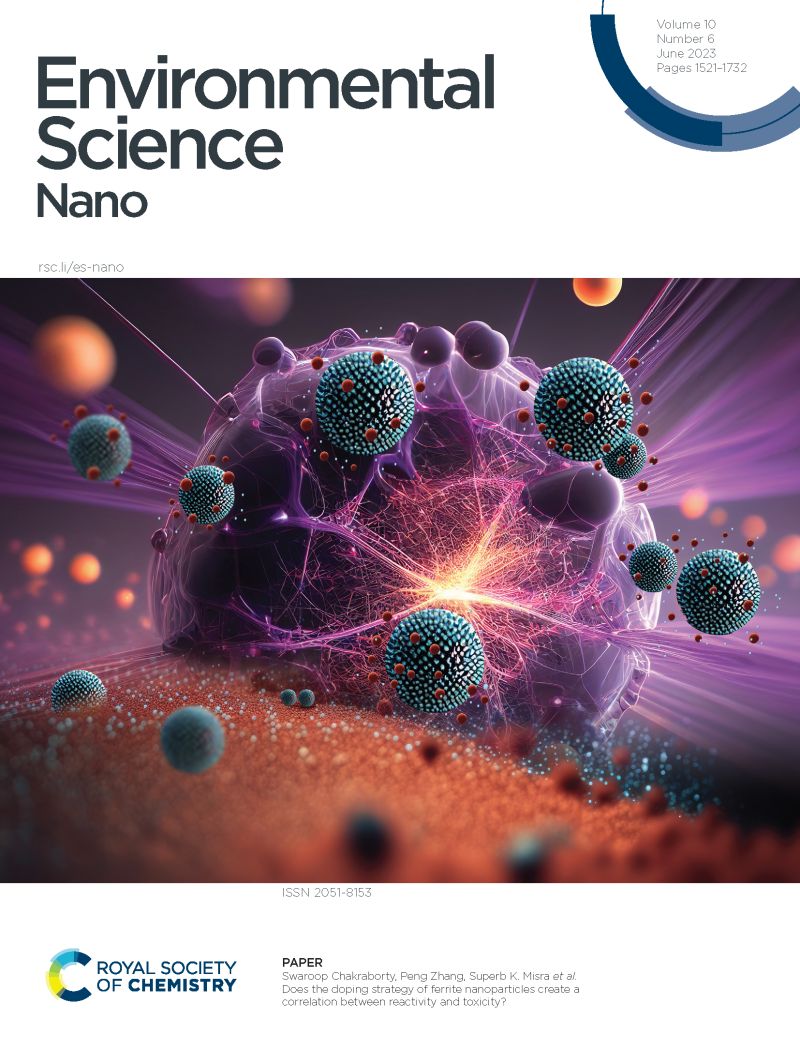Unlocking Actinide Pre-concentration Potential and Unique α-Scintillation Properties of Inorganic Nanotubes - Polyethersulfone Membrane Composite: A Viable Sensing Platform for Environmental Nuclear Forensics
IF 5.8
2区 环境科学与生态学
Q1 CHEMISTRY, MULTIDISCIPLINARY
引用次数: 0
Abstract
Radiometric assay of environmental samples has become an indispensable tool for nuclear safeguards and security. In spite of the availability of different radiometric techniques, the limiting factor today is the dearth of efficient separation materials to prepare samples for radiometric analysis directly from environmental samples. We herein demonstrate the potential of methyl functionalized aluminosilicate nanotubes (commonly known as methyl imogolite or Imo-CH3) for sequestering uranium and plutonium ions by arresting them from dilute aqueous solution in the form of insoluble hydroxides at alkaline condition, which subsequently form an optically transparent thin film on microporous PES membrane upon syringe filtration. Contrary to the individual counterparts, the PES-Imo-CH3 composite has been found to show a unique α-scintillation property in the presence of the arrested actinides, which has been used for gross α-radioactivity estimation at sub-Becquerel levels with a limit of detection 2.5 mBq.mL-1. The interaction and energy loss characteristics of α-particles in the PES-Imo-CH3 composite has been simulated by Monte Carlo method, which suggests the observed scintillation to be a result of indirect excitation of the Imo-CH3 nanotubes via a non-radiative energy transfer pathway. The PES-Imo-CH3 composite, used for gross scintillation counting, has also been demonstrated as a potential α-spectrometry platform, thus reducing the sample preparation steps and minimizing the nuclear forensic analysis timeline. The actinide sequestration efficiency of the nanotubes has been found to be 97.2 ± 1.2% for U and 99.5 ± 8.2% for Pu within the studied range of radioactivity concentrations with negligible selectivity between actinide elements, making it particularly unique for nuclear forensic applications where preserving the isotopic and elemental ratio is a key requirement.求助全文
约1分钟内获得全文
求助全文
来源期刊

Environmental Science: Nano
CHEMISTRY, MULTIDISCIPLINARY-ENVIRONMENTAL SCIENCES
CiteScore
12.20
自引率
5.50%
发文量
290
审稿时长
2.1 months
期刊介绍:
Environmental Science: Nano serves as a comprehensive and high-impact peer-reviewed source of information on the design and demonstration of engineered nanomaterials for environment-based applications. It also covers the interactions between engineered, natural, and incidental nanomaterials with biological and environmental systems. This scope includes, but is not limited to, the following topic areas:
Novel nanomaterial-based applications for water, air, soil, food, and energy sustainability
Nanomaterial interactions with biological systems and nanotoxicology
Environmental fate, reactivity, and transformations of nanoscale materials
Nanoscale processes in the environment
Sustainable nanotechnology including rational nanomaterial design, life cycle assessment, risk/benefit analysis
 求助内容:
求助内容: 应助结果提醒方式:
应助结果提醒方式:


